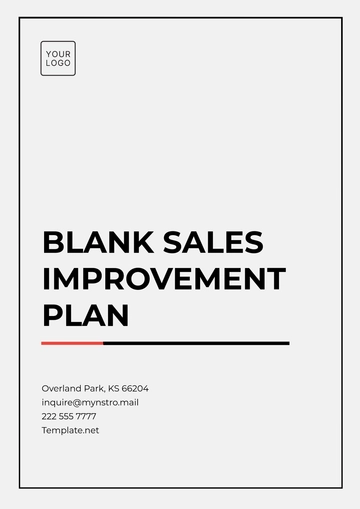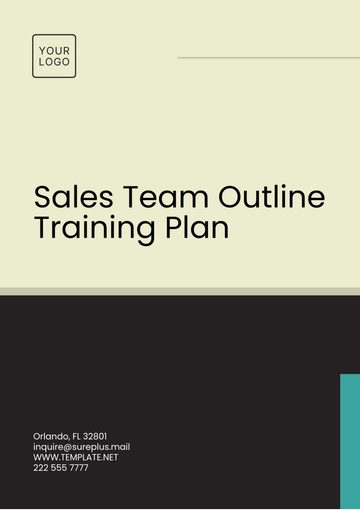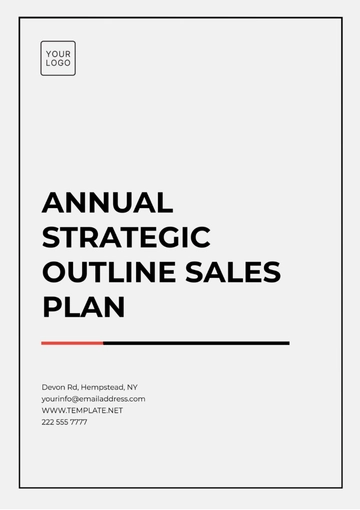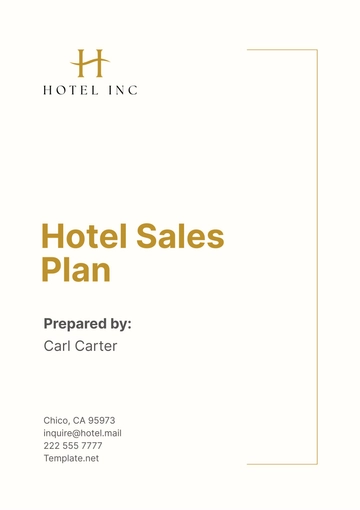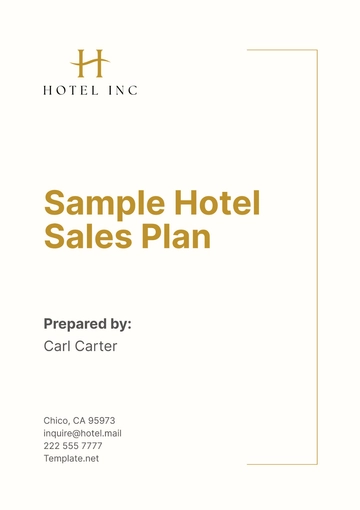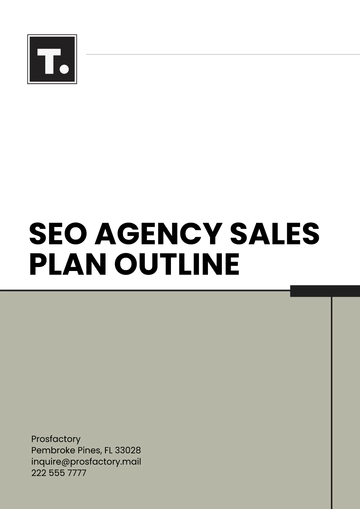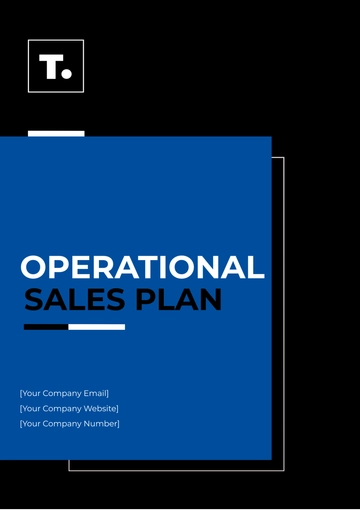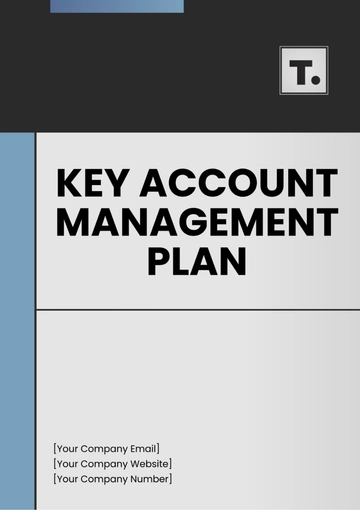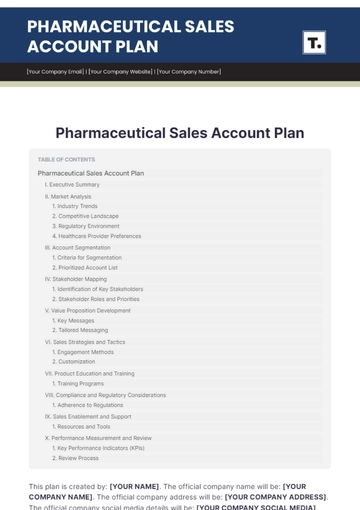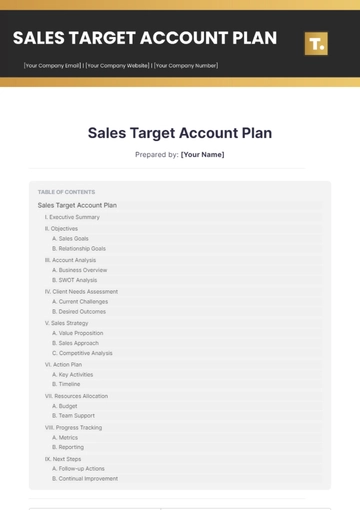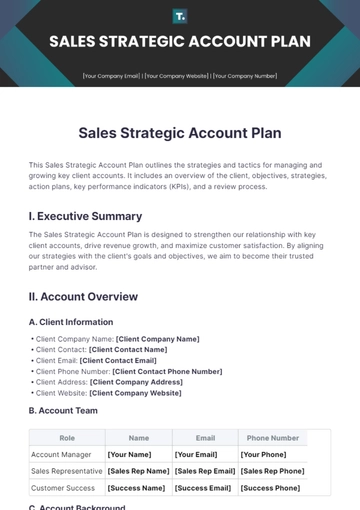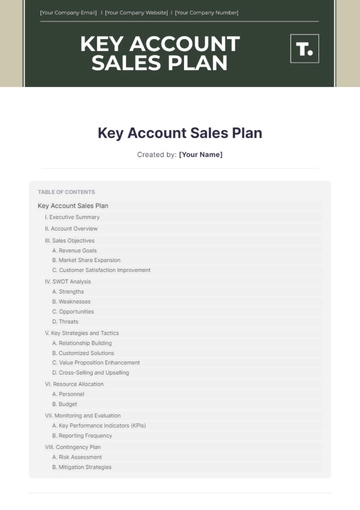Free Sales Engagement Plan

Written by: [Your Name]
I. Executive Summary
This sales plan is meticulously crafted to elevate the productivity of our sales team through the implementation of highly effective strategies. Presented in a structured format, this plan delineates the precise approach [Your Company Name] will undertake to realize its sales objectives for the forthcoming fiscal year.
II. Specific Goals
A. Sales Targets
Increase revenue by 15% within the next 12 months.
Acquire 50 new clients.
Maintain a 90% customer retention rate.
B. Customer Metrics
Expand into three new markets/regions.
Elevate customer satisfaction scores by 10%.
III. Market Analysis
A. Industry Overview
The industry landscape is undergoing a transformative shift, characterized by disruptive innovations and evolving consumer preferences.
Emerging technologies such as artificial intelligence, blockchain, and Internet of Things (IoT) are revolutionizing traditional business models.
Sustainability initiatives and ethical consumerism are reshaping market dynamics, compelling companies to adopt eco-friendly practices and transparent supply chains.
Globalization facilitates cross-border trade and collaboration, driving exponential growth projections for the industry.
B. Target Market
Affluent millennials aged 25-40 constitute the primary target market.
They are predominantly urban dwellers with a penchant for premium products and personalized experiences.
Sustainability and social responsibility are key factors influencing their purchasing decisions.
Digital marketing channels play a crucial role in engaging with this demographic, who are influenced by peer recommendations, online reviews, and social media trends.
Key decision-makers within this demographic include young professionals, trendsetters, and influencers, who wield significant influence over purchasing decisions.
C. Competitor Analysis
Competitor | Strengths | Weaknesses |
|---|---|---|
Competitor A | - Strong brand recognition and loyal customer base | - Limited product range compared to competitors |
Competitor B | - Extensive distribution network | - Higher prices compared to competitors |
Competitor C | - Innovative product offerings | - Limited market presence outside specific regions |
IV. Strategic Approaches
A. Product Differentiation
Detail how [Your Company Name]'s products/services stand out from competitors.
B. Market Penetration
Outline strategies for entering new markets and increasing market share within existing markets.
V. Actionable Tactics
A. Lead Generation
Implement a multi-channel lead generation strategy including email marketing, social media campaigns, and webinars
B. Sales Training
Regular training sessions focused on product knowledge and sales techniques
Onboarding programs for new sales team members
VI. Sales Team Structure
Define the roles and responsibilities within the sales team.
Role | Responsibilities |
|---|---|
Sales Manager | Overseeing team performance; reporting; strategy development |
Sales Representatives | Direct sales; managing client relationships; lead generation |
VII. Performance Metrics
Detail the metrics that will be used to measure progress towards goals.
Number of leads generated:
Tracking the influx of leads provides insights into the effectiveness of our marketing efforts and the resonance of our value proposition in the market.
Conversion rates:
Monitoring conversion rates from leads to customers unveils the efficacy of our sales strategies and highlights areas for optimization in the conversion funnel.
Total sales revenue:
A cornerstone metric reflecting the culmination of our sales efforts, total sales revenue serves as a barometer of business growth and financial health.
Customer satisfaction scores:
Evaluating customer satisfaction scores illuminates the quality of our products or services, fostering customer loyalty and advocacy crucial for sustained success.
VIII. Adaptability Strategies
Detail strategies for adapting to changes in the market or sales environment.
Ongoing market research and analysis:
Continual monitoring and analysis of market trends and consumer behavior enable proactive decision-making and swift adaptation to emerging opportunities or threats.
Regular feedback sessions with the sales team:
Facilitating open dialogues with the sales team fosters a culture of feedback and empowers the organization to swiftly adjust strategies based on frontline insights and market realities.
Flexible sales tactics and customizable sales pitches:
Equipping sales teams with adaptable tactics and customizable pitches empowers them to tailor their approach to the unique needs and preferences of each prospect, enhancing effectiveness and fostering deeper connections.
IX. Resource Allocation
Outline the resources required to meet sales objectives, including budget, personnel, and technology.
Budget:
A designated budget of $500,000 has been earmarked to fuel our sales initiatives, encompassing expenditures on marketing campaigns, sales promotions, and operational necessities.
Personnel:
Our sales force comprises a dynamic team of 15 proficient professionals, including sales representatives, managers, and support staff, adept at driving customer engagement and revenue growth.
Technology:
Our technological arsenal includes robust CRM systems tailored to streamline customer interactions and nurture leads effectively. Additionally, we leverage an array of cutting-edge sales tools and software solutions, empowering our team to optimize lead management, track pipeline progress, and derive actionable insights from data analytics.
X. Conclusion
This sales plan outlines a detailed strategy for achieving sales goals and improving team productivity. By following these structured approaches and adapting as needed, [Your Company Name] can successfully navigate the competitive landscape and achieve sustained growth.
- 100% Customizable, free editor
- Access 1 Million+ Templates, photo’s & graphics
- Download or share as a template
- Click and replace photos, graphics, text, backgrounds
- Resize, crop, AI write & more
- Access advanced editor
Enhance your sales strategy with the Sales Engagement Plan Template from Template.net. This customizable tool is designed to elevate your approach, offering a comprehensive framework for mapping out your sales initiatives. Easily downloadable and printable, this template streamlines your planning process. Plus, it's editable in our intuitive AI Editor Tool, ensuring seamless customization to suit your unique needs.
You may also like
- Finance Plan
- Construction Plan
- Sales Plan
- Development Plan
- Career Plan
- Budget Plan
- HR Plan
- Education Plan
- Transition Plan
- Work Plan
- Training Plan
- Communication Plan
- Operation Plan
- Health And Safety Plan
- Strategy Plan
- Professional Development Plan
- Advertising Plan
- Risk Management Plan
- Restaurant Plan
- School Plan
- Nursing Home Patient Care Plan
- Nursing Care Plan
- Plan Event
- Startup Plan
- Social Media Plan
- Staffing Plan
- Annual Plan
- Content Plan
- Payment Plan
- Implementation Plan
- Hotel Plan
- Workout Plan
- Accounting Plan
- Campaign Plan
- Essay Plan
- 30 60 90 Day Plan
- Research Plan
- Recruitment Plan
- 90 Day Plan
- Quarterly Plan
- Emergency Plan
- 5 Year Plan
- Gym Plan
- Personal Plan
- IT and Software Plan
- Treatment Plan
- Real Estate Plan
- Law Firm Plan
- Healthcare Plan
- Improvement Plan
- Media Plan
- 5 Year Business Plan
- Learning Plan
- Marketing Campaign Plan
- Travel Agency Plan
- Cleaning Services Plan
- Interior Design Plan
- Performance Plan
- PR Plan
- Birth Plan
- Life Plan
- SEO Plan
- Disaster Recovery Plan
- Continuity Plan
- Launch Plan
- Legal Plan
- Behavior Plan
- Performance Improvement Plan
- Salon Plan
- Security Plan
- Security Management Plan
- Employee Development Plan
- Quality Plan
- Service Improvement Plan
- Growth Plan
- Incident Response Plan
- Basketball Plan
- Emergency Action Plan
- Product Launch Plan
- Spa Plan
- Employee Training Plan
- Data Analysis Plan
- Employee Action Plan
- Territory Plan
- Audit Plan
- Classroom Plan
- Activity Plan
- Parenting Plan
- Care Plan
- Project Execution Plan
- Exercise Plan
- Internship Plan
- Software Development Plan
- Continuous Improvement Plan
- Leave Plan
- 90 Day Sales Plan
- Advertising Agency Plan
- Employee Transition Plan
- Smart Action Plan
- Workplace Safety Plan
- Behavior Change Plan
- Contingency Plan
- Continuity of Operations Plan
- Health Plan
- Quality Control Plan
- Self Plan
- Sports Development Plan
- Change Management Plan
- Ecommerce Plan
- Personal Financial Plan
- Process Improvement Plan
- 30-60-90 Day Sales Plan
- Crisis Management Plan
- Engagement Plan
- Execution Plan
- Pandemic Plan
- Quality Assurance Plan
- Service Continuity Plan
- Agile Project Plan
- Fundraising Plan
- Job Transition Plan
- Asset Maintenance Plan
- Maintenance Plan
- Software Test Plan
- Staff Training and Development Plan
- 3 Year Plan
- Brand Activation Plan
- Release Plan
- Resource Plan
- Risk Mitigation Plan
- Teacher Plan
- 30 60 90 Day Plan for New Manager
- Food Safety Plan
- Food Truck Plan
- Hiring Plan
- Quality Management Plan
- Wellness Plan
- Behavior Intervention Plan
- Bonus Plan
- Investment Plan
- Maternity Leave Plan
- Pandemic Response Plan
- Succession Planning
- Coaching Plan
- Configuration Management Plan
- Remote Work Plan
- Self Care Plan
- Teaching Plan
- 100-Day Plan
- HACCP Plan
- Student Plan
- Sustainability Plan
- 30 60 90 Day Plan for Interview
- Access Plan
- Site Specific Safety Plan


